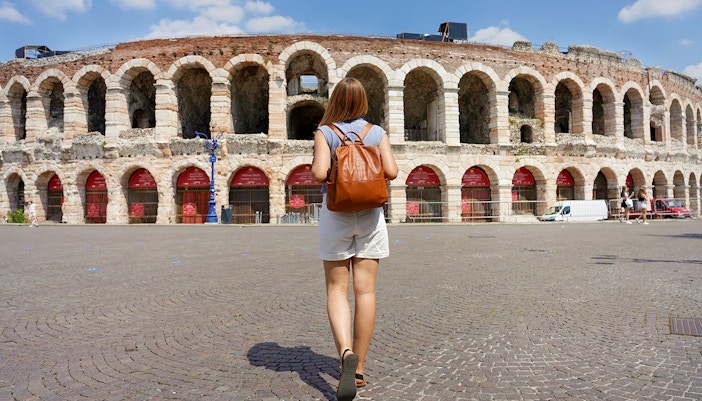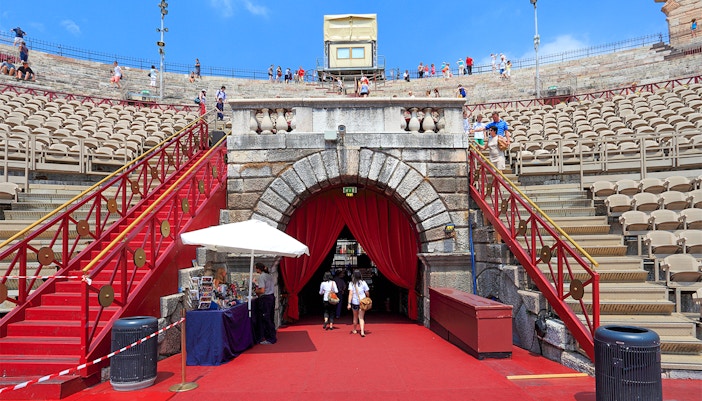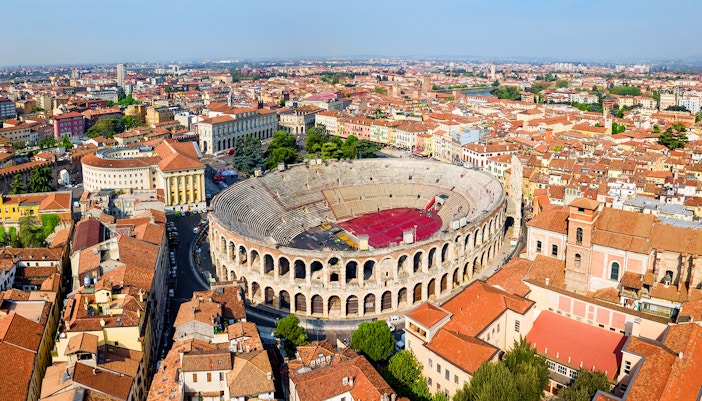Important events in the timeline of the Verona Arena
1 AD: Construction of the Verona Arena by the Romans begins, showcasing the architectural prowess of the time.
1117: The strongest recorded earthquake in northern Italy leaves the outer ring in ruins.
1590: The world's first documented joust takes place here, featuring a variety of equestrian games and demonstrations of knights showcasing their horsemanship.
1713: Merope, the work of Scipione Maffei, is recited in the amphitheater.
1751: The arena hosts a spectacle, the exhibition of a rhinoceros, and that leaves spectators in awe.
1786: Johann Wolfgang von Goethe visits and praises the arena.
1798: Napoleon attends a hunting event in the arena during his visit to Verona, following the Republic of Venice's defeat.
1913: The first modern opera performance, Aida by Giuseppe Verdi, is staged, marking the beginning of its modern-day association with opera.
1945: The arena sustains significant damage during World War II bombings but is later restored to its former glory.
Today: The Verona Arena continues to host a variety of events, including opera performances such as Aida and Carmen as well as concerts by famous musicians like Yanni, Muse and Evanescence.









